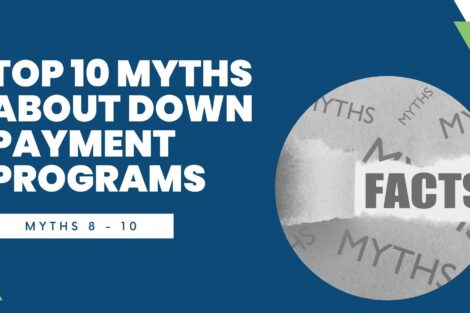
Final 3 Down Payment Program Myths Debunked

Down Payment Resource, the nationwide database for homebuyer programs, today released its Third Quarter 2020 Homeownership Program Index (HPI). The number of total programs is 2,340, and over 81 percent (81.1%) of programs currently have funds available for eligible homebuyers, down a little less than 2 percent from the previous HPI.
Down Payment Resource (DPR) communicates with 1,138 program administrators to track and update the country’s wide range of homeownership programs, including down payment and closing cost programs, Mortgage Credit Certificates (MCCs), affordable first mortgages and more.
Though we’ve noticed a slight and mostly temporary drop in available programs at the city and county level, it’s important to note that state housing finance agencies (HFAs), which comprise nearly 24 percent of all programs, have not closed or paused business during the COVID-19 pandemic.
Stockton Williams, Executive Director of the National Council of State Housing Agencies (NCSHA), discussed the COVID pandemic and its impact on HFAs and lenders in an interview in the June/July issue of the Down Payment Report.
According to Mr. Williams, “the last several months have been a tumultuous time for the mortgage finance system and everyone who is involved with providing housing lending. There have been lenders who have pulled back from originating loans for low- and moderate-income borrowers for a variety of reasons, including general economic stress, or pivoting to do more business in refinances since rates are so low. There is also a lot of concern, which, frankly, state HFAs share, about some of the actions FHFA, FHA, Fannie, and Freddie have taken and not taken. Those have all contributed to uncertainty in the markets.”
The good news though, as Mr. Williams put it, is that “more often than not, we are hearing that state housing finance agencies are doing as much or more business than they were at this time a year ago, and in a number of cases, they are doing more. A handful of state HFAs have even told us that they have had record production in recent months.”
As of August, over 81 percent of all DPAs were actively funded and available, and less than 2% had temporarily paused their programs due to the pandemic.
Although state HFAs have maintained business as usual through the pandemic, they had to explore more flexible arrangements regarding forbearance.
A key take-away from this year’s National Association of Local Housing Finance Agencies (NALHFA) annual conference was that it’s becoming apparent forbearance claims near the start of the pandemic were expressions of consumer caution. Claims have since slowed, and reports from May and June show monthly mortgage payments are being made. However, there is worry of potential volatility still to come.
MBA reported this month that the share of mortgage loans in forbearance declined for the 8th straight week, but according to CoreLogic, delinquency rates are rising.
HFAs are trying to work with their master servicers and participating lenders on flexibility with loan level pricing adjustments (LLPAs) and purchase timelines related to loans that enter forbearance.
Per the HPI, over 32 percent of programs are funded by HOME Investment Partnership Program (HOME) and Community Development Block Grant (CDBG) funds. As states begin rolling out COVID-19 housing relief programs, and as municipalities begin planning for HOME and CDBG allocations this Fall, it’s important to track funding status and even forecast expectations for 2021.
Many of these relief programs are leveraging CARES Act and Emergency Solutions Grant (ESG) funds, but may also use any remaining HOME and/or CDBG funds. Any impact on DPAs will likely begin to trickle down later this year in the form of constrained DPA budgets.
The good news is the House Appropriations Subcommittee on Transportation, Housing and Urban Development, and Related Agencies passed its fiscal year (FY) 2021 appropriations bill, which will significantly increase HUD funding for housing programs, most notably HOME and CDBG.
The HPI reports an increase in the share of down payment and closing cost assistance programs:
78% of programs in the database are down payment or closing cost assistance — a 1% increase from the previous HPI.
6% of programs are first mortgages — a 1% decrease from the previous HPI.
5% of programs are Mortgage Credit Certificates (MCCs) — a 1% decrease from the previous HPI.
11% are additional programs, including matched savings programs and Housing Choice Vouchers (HCV).
Download the complete Q3 2020 HPI press release.
Never want to miss a post? For more useful down payment and home buying information, subscribe to our mailing list.
Are you an industry professional? Download our latest Down Payment Report for the data and news on first-time homebuyers and residential down payments.
